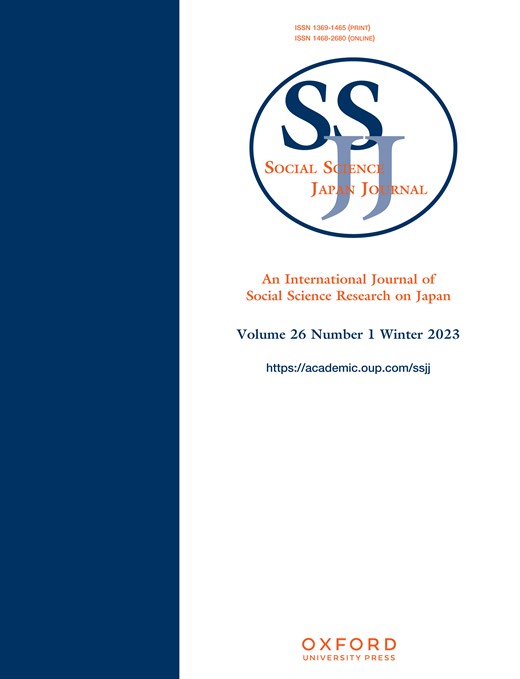-
Views
-
Cite
Cite
Hanno JENTZSCH, Betting on the Farm: Institutional Change in Japanese Agriculture, Social Science Japan Journal, Volume 26, Issue 1, Winter 2023, Pages 153–155, https://doi.org/10.1093/ssjj/jyac030
Close - Share Icon Share
Extract
Japan’s rapidly aging agricultural sector has long appeared reluctant to change. This image was embodied by the organization of agricultural cooperatives JA (Japan Agriculture), the powerful spider in the web of the postwar agricultural support and protection regime, committed to using its political and economic clout to block any meaningful reform. In ‘Betting on the Farm’, Patricia Maclachlan and Kay Shimizu offer a fascinating new perspective on JA with an empirically rich and theoretically intriguing account of how local co-ops and their farmer-members have been changing JA and Japanese agriculture from within.
This change is happening in the context of demographic decline and gradual market liberalization—the accumulated result of a series of reforms since the early 1990s that have substantially altered the regulatory landscape in which farmers and JA operate. Farmers gained more freedom to professionalize their businesses and market their products outside the cooperative network, supported by various government policies to promote structural change and entrepreneurial farming. This created pressure for JA and its less than 600 remaining local co-ops. Yet, local co-ops have not been passive bystanders in this process. Some have been successfully adapting to market signals to bind farmers to the organization, often starting long before the Abe administration directly targeted JA with an ambitious reform initiative in 2014. Other co-ops seem either unable or unwilling to adapt and—so the authors argue—run a higher risk that the entrepreneurial farm(er)s that are the future of Japanese agriculture will turn their backs on them. The book sets out to investigate what explains this divergent behavior.




